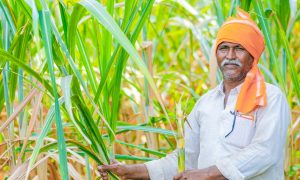Sugar production to rebound as harvesting ban expires -BMI

Following the four-month ban on sugar milling by the Agriculture and Food Authority (AFA), sugarcane production in Kenya is set to increase by 37.7%, from 530,000 tonnes last year to 730,000 tonnes in 2024/25, according to BMI research. The ban, aimed at curbing premature milling due to La Niña-induced low rainfall, has lifted, allowing factories to process only mature cane. Despite past production dips, sugar consumption is expected to rise by 3.2%, driven by bakery and hospitality sector demands.
Sugar cane farmers urged to brace for increased sugar cane production following the expiration of the four-month ban on sugar milling by the Agriculture and Food Authority(AFA).
Production is expected to have a 37.7 per cent year-on-year increase, from 530,000 tonnes the previous year to 730,000 tonnes in 2024/25.
This is according to the latest data from BMI research firm’s report dubbed ‘Sugar Production Review 2024’, which offered insights on the effects of the ban lift on the sugar sector.
The ban, implemented in July 2023 and ceased in November of the same year, was implemented to curb premature sugarcane milling.
The rise of premature sugarcane harvesting was due to below-average rainfall that affected Kenya between 2020 and 2023, also referred to as the three-year La Niña.
Therefore, to remedy the situation, AFA only allowed factories to process sugar cane if they could prove that they had mature sugarcane.
“Despite the sharp decrease in production caused by the ban, we expect consumption to increase by 3.2 per cent year on year from 1.15 million tonnes in 2023/24 to 1.18 million tonnes in 2024/25,”read the report in part.
The uptake in consumption was attributed to the growing demand of sugar in the bakery and hospitality sectors.
Additionally, BMI County Risk experts expect private consumption to be supported by lower inflation rate.
In particular, confectioneries and baked goods were identified by Kenya’s 2023 Economic Survey as the two fastest-growing subsectors of the country’s food processing industry.
The report also cited the growth in the tourism sector, which contributed Sh1 trillion to Kenya’s economy in 2023, as an added area that is set to catalyze increased sugar demand.
In consequence, Kenya’s sugar sector is expected to incur a deficit, peaking in 2023/24 at 658,000 tonnes and narrowing to 496,000 tonnes in 2024/25.
Notably, in June 2023, the Ministry of Agriculture and Livestock Development issued a Policy on the Revitalisation of the Sugar Industry.
It acknowledged the struggles faced by the sugar industry and the continued reliance on imports.
The most significant challenges weighing on Kenya’s domestic sugar sector include; low productivity and quality of the sugar, inefficient processing, limited capture of value added and low adoption of technology.
Furthermore, farmers face numerous difficulties in accessing credit while fertility tends to be low in sugarcane growing areas due to inefficient farming practices such as burning of crop waste and monocropping.
According to the Kenya Association of Manufacturers(KAM) Sugar Sub-Sector Profile 2021, the sugar sector employs over 400,000 small-scale farmers, who supply 90 per cent of cane to 14 sugar factories in the country.
Industry data shows it is an employer for most households in 15 counties traversing Nyanza, Rift Valley, Western and Coast regions
Source Link : https://www.the-star.co.ke/business/2024-07-22-sugar-production-to-rebound-as-harvesting-ban-expires-bmi/














